4044M, 4044R, 4049M, 4049R, 4052M, 4052R, 4066M & 4066R
Compact Utility
Tractors Diagnostic and Repair
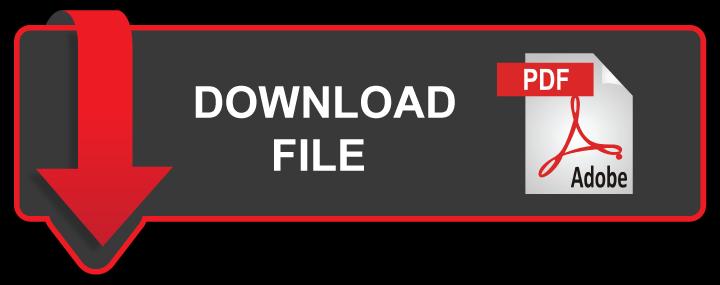
4044M, 4044R, 4049M, 4049R, 4052M, 4052R, 4066M, 4066R (S.N. 010001-) TM131019 05OCT15 (ENGLISH)
TECHNICAL MANUAL
John Deere Agriculture

Table of contents
FOREWORD
Section 10 - GENERAL INFORMATION
Group 05A - Safety
Group 05B - General References
Group 05C - Technical Specific References
Group 05D - Fuel and Lubricants
Group 05E - Serial Number Locations
Section 20 - ENGINE REPAIR
Group 05 - Engine
Group 10 - Cooling System
Section 30 - FUEL, AIR INTAKE, AND EXHAUST REPAIR
Group 05 - Fuel
Group 10 - Air Intake
Group 20 - Exhaust
Section 40 - ELECTRICAL REPAIR
Group 05 - Battery, Starter and Alternator
Group 10 - Electrical System Components
Group 15 - Wiring Harnesses
Section 50 - TRANSMISSIONS REPAIR
Group 05 - Separation
Group 10 - Power Train Hydrostatic
Group 15 - Power Train Power Reverser
Section 55 - FINAL DRIVE REPAIR
Group 05 - MFWD
Group 10 - Differential
Group 15 - PTO
Section 60 - STEERING AND BRAKE REPAIR
Group 10 - Steering
Group 15 - Brake
Section 70 - HYDRAULICS REPAIR
Group 10 - Hydraulic Pump and Filter
Group 15 - Rockshaft
Group 20 - Range Control and Three Point Hitch
Group 25 - Selective Control Valve
Section 80 - MISCELLANEOUS REPAIR
Group 10 - Hood and Side Panels
Group 15 - Fenders
Group 20 - Wheels
Section 90 - CAB/OPEN OPERATOR’S STATION REPAIR
Group 10 - Seat and Support
Group 15 - Control Console
Group 25 - Roll-Gard
Group 30 - Cab Components
Group 35 - Open Operator Station Components
Group 40 - Heating System
Group 45 - Air Conditioning System
Group 50 - Temperature Control, Belts, and Blower Motor
Section 211 - DIAGNOSTIC TROUBLE CODES
Group 05 - General References
Group ECU - Engine Control Unit (ECU) Diagnostic Trouble Codes
Group ICC - Instrument Cluster Control (ICC) Diagnostic Trouble Codes
Group PTH - Power Train Hydrostatic (PTH) Control Unit Diagnostic Trouble Codes
TM131019-TECHNICAL MANUAL (g) by Belgreen v2.1 <- Go to Global Table of contents TM131019-TECHNICAL MANUAL
Group PTR - Power Train Reverser (PTR) Control Unit Diagnostic Trouble Codes
Section 212 - OBSERVABLE SYMPTOMS AND SYSTEM DIAGNOSTICS
Group 05 - General References
Group 20 - Engine Diagnostics
Group 30 - Fuel, Air Intake, Exhaust, and Cooling Diagnostics
Group 40 - Electrical Diagnostics
Group 45 - Electronic Control Unit Diagnostics
Group 50 - Drive Systems and Transmission Diagnostics
Group 60 - Steering and Brakes Diagnostics
Group 70 - Hydraulic Diagnostics
Group 90 - Cab/Open Operator′s Station Diagnostics
Section 220 - ENGINE OPERATION, TEST, AND ADJUSTMENTS
Group 05 - General References
Group 10 - Calibrations, Preliminary Checks and Operational Checks
Group 20 - Theory of Operation
Group 50 - Tests and Adjustments
Section 230 - FUEL , AIR INTAKE, EXHAUST, AND COOLING OPERATION, TEST, AND ADJUSTMENTS
Group 05 - General References
Group 10 - Calibrations, Preliminary Checks and Operational Checks
Group 20 - Theory of Operation
Group 40 - Component and Connector Information
Group 50 - Tests and Adjustments
Section 240A - ELECTRICAL GENERAL AND THEORY OF OPERATION
Group 05 - General References
Group 20A - Key Switch, Starter, and Alternator
Group 20B - Accessory Power and Horn
Group 20C - Control Module, Headlights, Signal, Work Lighting, and Warning Lights
Group 20G - Hydraulics, Rockshaft, and Diverter
Group 20J - Heating and Air Conditioning
Group 20K - Cruise Control
Group 20L - Windshield Wiper and Washer
Group 20M - Dome Light, Door Switch, Air Seat, and Radio
Group 20N - Instrument Control Cluster (ICC)
Group 20P - MFWD, Brakes, PTO, and Speed Sensor
Group 20Q - Transmission Control Unit (TCU)
Group 20R - Engine Control Unit (ECU)
Section 240B - ELECTRICAL SCHEMATICS
Group 05 - General References
Group 30A - Electrical Schematics
Group 30B - Circuit Diagrams
Section 240C - ELECTRICAL COMPONENTS AND CONNECTORS
Group 05 - General References
Group 40A - (SE1) Key Switch, Starter, and Alternator
Group 40B - (SE3 SE4) Accessory Power and Horn
Group 40C - (SE5 SE7) Control Module, Headlights, Signal, Work Lighting, and Warning Lights
Group 40D - (SE9) Junction Block Power
Group 40E - (SE10 SE11) Rear Trailer Connector
Group 40F - (SE13) Back-Up Alarm and Beacon Light
Group 40G - (SE14) Hydraulics, Rockshaft, and Diverter
Group 40H - (SE15) Power Port
Group 40I - (SE16 SE17) Heating and Air Conditioning
Group 40J - (SE18) Cruise Control
TM131019-TECHNICAL MANUAL (g) by Belgreen v2.1 <- Go to Global Table of contents TM131019-TECHNICAL MANUAL
Group 40K - (SE19 SE20) Windshield Wiper and Washer
Group 40L - (SE22 SE23) Dome Light, Door Switch, Air Seat, and Radio
Group 40M - (SE24) Instrument Control Cluster (ICC)
Group 40N - (SE25 SE28) MFWD, Brakes, PTO, and Speed Sensor
Group 40P - (SE29) Transmission Control Unit (TCU)
Group 40Q - (SE30) Engine Control Unit (ECU)
Group 40S - (SE32) Controller Area Network
Group 40T - Fuses and Relays
Group 40U - Ground Points
Group 40V - Interconnects
Section 240D - ELECTRICAL TESTS AND ADJUSTMENTS
Group 05 - General References
Group 50 - Tests and Adjustments
Section 245 - ELECTRONIC CONTROL UNITS
Group 05 - General References
Group 10 - Calibrations, Preliminary Checks and Operational Checks
Group 20 - Theory of Operation
Group 40 - Component and Connector Information
Group 50 - Test and Adjustments
Group ICC - Instrument Cluster Control (ICC)
Group ECU - Engine Control Unit (ECU)
Group PTH - Power Train Hydrostatic (PTH)
Group PTR - Power Train Reverser (PTR)
Section 250 - POWER TRAIN—TRANSMISSION OPERATION, TEST, AND ADJUSTMENTS
Group 05A - General References
Group 10A - Calibrations, Preliminary Checks and Operational Checks PTH
Group 10B - Calibrations, Preliminary Checks and Operational Checks PTR
Group 20A - Theory of Operation PTH
Group 20B - Theory of Operation PTR
Group 30A - Schematics PTH
Group 30B - Schematics PTR
Group 40A - Component and Connector Information PTH
Group 40B - Component and Connector Information PTR
Group 50A - Tests and Adjustments PTH
Group 50B - Tests and Adjustments PTR
Section 255 - FINAL DRIVE OPERATION, TEST, AND ADJUSTMENTS
Group 05A - General References
Group 10 - Calibrations, Preliminary Checks and Operational Checks
Group 20 - Theory of Operation
Group 40 - Component and Connector Information
Group 50 - Tests and Adjustments
Section 260 - STEERING AND BRAKES OPERATION, TEST, AND ADJUSTMENTS
Group 05A - General References
Group 10A - Calibrations, Preliminary Checks and Operational Checks Steering
Group 10B - Calibrations, Preliminary Checks and Operational Checks Brakes
Group 20A - Theory of Operation Steering
Group 20B - Theory of Operation Brakes
Group 30A - Schematics Steering
Group 40A - Component and Connector Information Steering
Group 40B - Component and Connector Information Brakes
Group 50A - Tests and Adjustments Steering
Group 50B - Tests and Adjustments Brakes
Section 270 - HYDRAULICS OPERATION, TEST, AND ADJUSTMENTS
TM131019-TECHNICAL MANUAL (g) by Belgreen v2.1 <- Go to Global Table of contents TM131019-TECHNICAL MANUAL
Group 05A - General References
Group 10 - Calibrations, Preliminary Checks and Operational Checks
Group 20 - Theory of Operation
Group 30 - Schematics
Group 40 - Component and Connector Information
Group 50 - Tests and Adjustments
Section 290 - CAB/OPEN OPERATORS STATION OPERATION, TEST, AND ADJUSTMENTS
Group 05A - General References
Group 10A - Calibrations, Preliminary Checks and Operational Checks
Group 20A - HVAC Theory of Operation
Group 20B - Seat Theory of Operation
Group 30A - Schematics
Group 40 - Component and Connector Information
Group 50 - Tests and Adjustments
Section 299 - SERVICE TOOLS
Group 05A - General References
Group 05C - Dealer Fabricated and Service Tools
TM131019-TECHNICAL MANUAL (g) by Belgreen v2.1 <- Go to Global Table of contents TM131019-TECHNICAL MANUAL
<- Go to Global Table of contents TM131019-TECHNICAL MANUAL
Foreword
This manual is written for an experienced technician. Essential tools required in performing certain service work are identified in this manual and are recommended for use.
Live with safety: Read the safety messages in the introduction of this manual and the cautions presented throughout the text of the manual.
□ This is the safety-alert symbol. When you see this symbol on the machine or in this manual, be alert to the potential for personal injury.
Technical manuals are divided in two parts: repair and operation and tests. Repair sections tell how to repair the components Operation and tests sections help you identify the majority of routine failures quickly.
Information is organized in groups for the various components requiring service instruction. At the beginning of each group are summary listings of all applicable essential tools, service equipment and tools, other materials needed to do the job, service parts kits, specifications, wear tolerances, and torque values.
Technical Manuals are concise guides for specific machines. They are on-the-job guides containing only the vital information needed for diagnosis, analysis, testing, and repair.
Fundamental service information is available from other sources covering basic theory of operation, fundamentals of troubleshooting, general maintenance, and basic type of failures and their causes.
Section 10 page 1 <- Go to Section TOC TM131019-TECHNICAL MANUAL GENERAL INFORMATION (g) by Belgreen v2.0
TM131019-TECHNICAL MANUAL (g) by Belgreen v2.1 <- Go to Global Table of contents TM131019-TECHNICAL MANUAL
Table of contents Group 05A - Safety .................................................................................................................................................. 1 Work In Ventilated Area .............................................................................................. 1 Recognize Safety Information 1 Avoid Backover Accidents Prevent Machine Runaway .......................................................................................... 1 ......................................................................................... 2 Avoid Contact with Agricultural Chemicals 3 Clean Vehicle of Hazardous Pesticides ............................................................................. 4 Use a Safety Chain Work in Clean Area . ................................................................................................. 4 4 Decommissioning: Proper Recycling and Disposal of Fluids and Components................................ 6 Avoid Harmful Asbestos Dust ........................................................................................ 6 Avoid Hot Exhaust ..................................................................................................... 7 Clean Exhaust Filter Safely........................................................................................... 8 Handle Fuel Safely Avoid Fires..................................................................................... 9 Prepare for Emergencies..............................................................................................10 Handle Fluids Safely Avoid Fires ..................................................................................10 Avoid High-Pressure Fluids..........................................................................................11 Install All Guards ......................................................................................................12 Use Proper Lifting Equipment Illuminate Work Area Safely .....................................................................................12 . .....................................................................................12 Live With Safety ......................................................................................................13 Service Machines Safely .............................................................................................13 Support Machine Properly...........................................................................................14 Remove Paint Before Welding or Heating.........................................................................14 Park Machine Safely..................................................................................................15 Stay Clear of Rotating Drivelines ...................................................................................16 Follow Safety Instructions ............................................................................................17 Use Proper Tools......................................................................................................17 Service Tires Safely...................................................................................................19 Keep ROPS Installed Properly .......................................................................................19 Construct Dealer-Made Tools Safely ...............................................................................20 Practice Safe Maintenance Understand Signal Words ........................................................................................21 . ........................................................................................21 Replace Safety Signs .................................................................................................22 Avoid Heating Near Pressurized Fluid Lines.......................................................................23 Wear Protective Clothing............................................................................................. 24 Service Accumulator Systems Safely ..............................................................................24 Handling Batteries Safely............................................................................................26 Handle Agricultural Chemicals Safely..............................................................................28 Service Cooling System Safely......................................................................................29 Use Steps and Handholds Correctly ...............................................................................29 Transport Tractor Safely ............................................................................................. 29 Group 05B - General References .......................................................................................................................31 Deliver Safely .........................................................................................................31 Information Available in Sections, Groups and Subgroups ...................................................... 33 Glossary of Terms ....................................................................................................34 Trademarks ...........................................................................................................36 Group 05C - Technical Specific References ...................................................................................................37 Metric Bolt and Screw Torque Values ..............................................................................37 Unified Inch Bolt and Screw Torque Values .......................................................................38
Section 10 - GENERAL INFORMATION
TM131019-TECHNICAL MANUAL (g) by Belgreen v2.1 <- Go to Global Table of contents TM131019-TECHNICAL MANUAL Group 05D - Fuel and Lubricants ......................................................................................................................39 Diesel Fuel.............................................................................................................39 Handling and Storing Diesel Fuel...................................................................................40 Engine Oil..............................................................................................................41 Alternative and Synthetic Lubricants ..............................................................................41 Lubricant Storage ....................................................................................................42 Mixing of Lubricants..................................................................................................42 Grease .................................................................................................................42 Transmission and Hydraulic Oil.....................................................................................44 Diesel Engine Coolant................................................................................................45 Group 05E - Serial Number Locations .............................................................................................................47 Serial Numbers .......................................................................................................47 Machine Product Identification Number ...........................................................................47 Engine Serial Number ................................................................................................47 Transmission Serial Number ........................................................................................47
Work In Ventilated Area
Group 05A - Safety
Engine exhaust fumes
Engine exhaust fumes can cause sickness or death. If it is necessary to run an engine in an enclosed area, remove the exhaust fumes from the area with an exhaust pipe extension.
If you do not have an exhaust pipe extension, open the doors and get outside air into the area.
Recognize Safety Information
Safety-alert symbol

This is a safety-alert symbol. When you see this symbol on your machine or in this manual, be alert to the potential for personal injury.
Follow recommended precautions and safe operating practices.

Avoid Backover Accidents
Section 10 - GENERAL INFORMATION Group 05A: Safety Section 10 page 1 <- Go to Section TOC TM131019-TECHNICAL MANUAL
Avoid Backover Accidents
Before moving machine, be sure that all persons are clear of machine path. Turn around and look directly for best visibility. Use a signal person when backing if view is obstructed or when in close quarters.
Do not rely on a camera to determine if personnel or obstacles are behind the machine. The system can be limited by many factors including maintenance practices, environmental conditions, and operating range.

Prevent Machine Runaway
Machinery Runaway
Avoid possible injury or death from machinery runaway.
Do not start engine by shorting across starter terminals. Machine will start in gear if normal circuitry is bypassed. NEVER start engine while standing on ground. Start engine only from operator’s seat, with transmission in neutral or park.
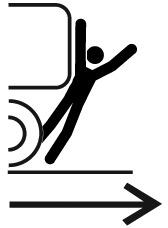
Section 10 - GENERAL INFORMATION Group 05A: Safety Section 10 page 2 <- Go to Section TOC TM131019-TECHNICAL MANUAL
Avoid Contact with Agricultural Chemicals
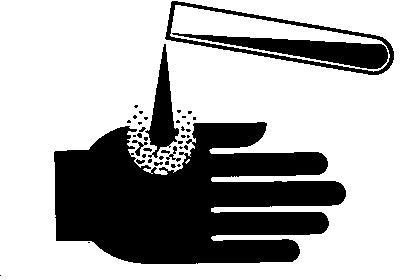
Harmful Pesticides
Pesticide Use
CAUTION:
This enclosed cab does not protect against inhaling vapor, aerosol or dust.
[1] - When operating in an environment where pesticides are present, wear a long-sleeved shirt, long-legged pants, shoes, and socks.
[2] - If pesticide use instructions require respiratory protection, wear an appropriate respirator inside the cab.


[3] - Wear personal protective equipment as required by the pesticide use instructions when leaving the enclosed cab: into a treated area to work with contaminated application equipment such as nozzles which must be cleaned, changed or redirected to become involved with mixing and loading activities
[4] - Before re-entering the cab, remove protective equipment and store either outside the cab in a closed box or some other type of sealable container or inside the cab in a pesticide resistant container, such as a plastic bag.
Section 10 - GENERAL INFORMATION Group 05A: Safety Section 10 page 3 <- Go to Section TOC TM131019-TECHNICAL MANUAL
[5] - Clean your shoes or boots to remove soil or other contaminated particles prior to entering the cab.
Clean Vehicle of Hazardous Pesticides
CAUTION:
During application of hazardous pesticides, pesticide residue can build up on the inside or outside of the vehicle. Clean vehicle according to use instructions of hazardous pesticides.
When exposed to hazardous pesticides, clean exterior and interior of vehicle daily to keep free of the accumulation of visible dirt and contamination.
[1] - Sweep or vacuum the floor of cab.
[2] - Clean headliners and inside cowlings of cab.
[3] - Wash entire exterior of vehicle.
[4] - Dispose of any wash water with hazardous concentrations of active or non-active ingredients according to published regulations or directives.
Use a Safety Chain
Safety Chain
A safety chain will help control drawn equipment should it accidentally separate from the drawbar.
Using the appropriate adapter parts, attach the chain to the tractor drawbar support or other specified anchor location. Provide only enough slack in the chain to permit turning.
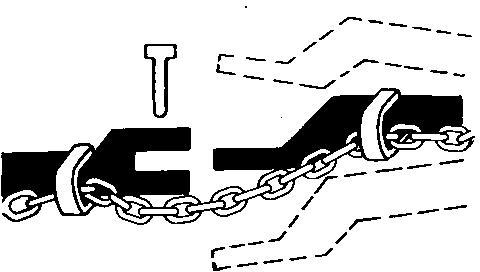
See your John Deere dealer for a chain with a strength rating equal to or greater than the gross weight of the towed machine. Do not use safety chain for towing.
Work in Clean Area

Section 10 - GENERAL INFORMATION Group 05A: Safety Section 10 page 4 <- Go to Section TOC TM131019-TECHNICAL MANUAL
Clean Work Area
Before starting a job:
Clean work area and machine. Make sure you have all necessary tools to do your job. Have the right parts on hand. Read all instructions thoroughly; do not attempt shortcuts.
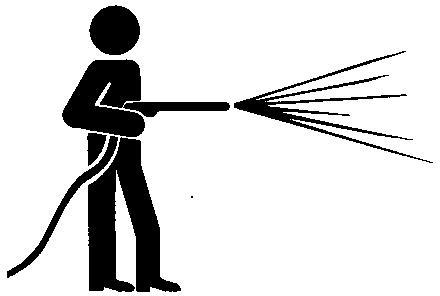
Section 10 - GENERAL INFORMATION Group 05A: Safety Section 10 page 5 <- Go to Section TOC TM131019-TECHNICAL MANUAL
Decommissioning: Proper Recycling and Disposal of Fluids and Components
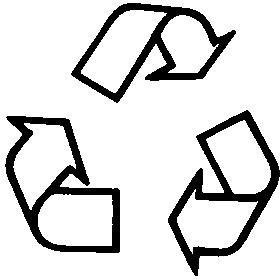
Recycle Waste
Safety and environmental stewardship measures must be taken into account when decommissioning a machine and/or component. These measures include the following:
Use appropriate tools and personal protective equipment such as clothing, gloves, face shields or glasses, during the removal or handling of objects and materials.
Follow instructions for specialized components.
Release stored energy by lowering suspended machine elements, relaxing springs, disconnecting the battery or other electrical power, and releasing pressure in hydraulic components, accumulators, and other similar systems.
Minimize exposure to components which may have residue from agricultural chemicals, such as fertilizers and pesticides. Handle and dispose of these components appropriately.
Carefully drain engines, fuel tanks, radiators, hydraulic cylinders, reservoirs, and lines before recycling components. Use leak-proof containers when draining fluids. Do not use food or beverage containers. Do not pour waste fluids onto the ground, down a drain, or into any water source.
Observe all national, state, and local laws, regulations, or ordinances governing the handling or disposal of waste fluids (example: oil, fuel, coolant, brake fluid); filters; batteries; and, other substances or parts. Burning of flammable fluids or components in other than specially designed incinerators may be prohibited by law and could result in exposure to harmful fumes or ashes.
Service and dispose of air conditioning systems appropriately. Government regulations may require a certified service center to recover and recycle air conditioning refrigerants which could damage the atmosphere if allowed to escape. Evaluate recycling options for tires, metal, plastic, glass, rubber, and electronic components which may be recyclable, in part or completely.
Contact your local environmental or recycling center, or your John Deere dealer for information on the proper way to recycle or dispose of waste.
Avoid Harmful Asbestos Dust

Section 10 - GENERAL INFORMATION Group 05A: Safety Section 10 page 6 <- Go to Section TOC TM131019-TECHNICAL MANUAL
Asbestos Dust
Avoid breathing dust that may be generated when handling components containing asbestos fibers. Inhaled asbestos fibers may cause lung cancer.
Components in products that may contain asbestos fibers are brake pads, brake band and lining assemblies, clutch plates, and some gaskets. The asbestos used in these components is usually found in a resin or sealed in some way. Normal handling is not hazardous as long as airborne dust containing asbestos is not generated.
Avoid creating dust. Never use compressed air for cleaning. Avoid brushing or grinding material containing asbestos. When servicing, wear an approved respirator. A special vacuum cleaner is recommended to clean asbestos. If not available, apply a mist of oil or water on the material containing asbestos.
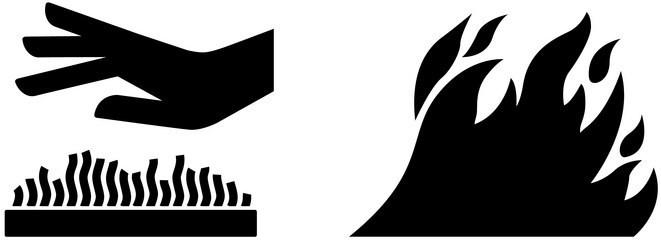
Keep bystanders away from the area.
Avoid Hot Exhaust
Safety—Hot Parts
Servicing machine or attachments with engine running can result in serious personal injury. Avoid exposure and skin contact with hot exhaust gases and components.
Exhaust parts and streams become very hot during operation. Exhaust gases and components reach temperatures hot enough to burn people, ignite, or melt common materials.
Section 10 - GENERAL INFORMATION Group 05A: Safety Section 10 page 7 <- Go to Section TOC TM131019-TECHNICAL MANUAL
Clean Exhaust Filter Safely


Fire Safety
Hand Over Flame
Moving Parts

Section 10 - GENERAL INFORMATION Group 05A: Safety Section 10 page 8 <- Go to Section TOC TM131019-TECHNICAL MANUAL
Stop
During exhaust filter cleaning operations, the engine may run at elevated idle and hot temperatures for an extended period of time. Exhaust gases and exhaust filter components reach temperatures hot enough to burn people, or ignite or melt common materials
Keep machine away from people, animals, or structures which may be susceptible to harm or damage from hot exhaust gases or components. Avoid potential fire or explosion hazards from flammable materials and vapors near the exhaust. Keep exhaust outlet away from people and anything that can melt, burn, or explode.
Closely monitor machine and surrounding area for smoldering debris during and after exhaust filter cleaning.
Adding fuel while an engine is running can create a fire or explosion hazard. Always stop engine before refueling machine and clean up any spilled fuel.
Always make sure that engine is stopped while hauling machine on a truck or trailer.
Contact with exhaust components while still hot can result in serious personal injury.
Avoid contact with these components until cooled to safe temperatures.
If service procedure requires engine to be running:
Only engage power-driven parts required by service procedure

Ensure that other people are clear of operator station and machine
Keep hands, feet, and clothing away from power-driven parts.
Always disable movement (neutral), set the parking brake or mechanism and disconnect power to attachments or tools before leaving the operator’s station.
Shut off engine and remove key (if equipped) before leaving the machine unattended.
Handle Fuel Safely—Avoid Fires
Section 10 - GENERAL INFORMATION Group 05A: Safety Section 10 page 9 <- Go to Section TOC TM131019-TECHNICAL MANUAL
Avoid Fires
Handle fuel with care: it is highly flammable. Do not refuel the machine while smoking or when near open flame or sparks. Always stop engine before refueling machine. Fill fuel tank outdoors. Prevent fires by keeping machine clean of accumulated trash, grease, and debris. Always clean up spilled fuel. Use only an approved fuel container for transporting flammable liquids.
Never fill fuel container in pickup truck with plastic bed liner. Always place fuel container on ground before refueling. Touch fuel container with fuel dispenser nozzle before removing can lid. Keep fuel dispenser nozzle in contact with fuel container inlet when filling.
Do not store fuel container where there is an open flame, spark, or pilot light such as within a water heater or other appliance.

Prepare for Emergencies
First Aid Kit
Be prepared if a fire starts.
Keep a first aid kit and fire extinguisher handy.
Keep emergency numbers for doctors, ambulance service, hospital, and fire department near your telephone.

Handle Fluids Safely—Avoid Fires
Section 10 - GENERAL INFORMATION Group 05A: Safety Section 10 page 10 <- Go to Section TOC TM131019-TECHNICAL MANUAL
Avoid Fires
When you work around fuel, do not smoke or work near heaters or other fire hazards. Store flammable fluids away from fire hazards. Do not incinerate or puncture pressurized containers. Make sure machine is clean of trash, grease, and debris.
Do not store oily rags; they can ignite and burn spontaneously.

Avoid High-Pressure Fluids
High Pressure
Inspect hydraulic hoses periodically – at least once per year – for leakage, kinking, cuts, cracks, abrasion, blisters, corrosion, exposed wire braid or any other signs of wear or damage.
Replace worn or damaged hose assemblies immediately with John Deere approved replacement parts.
Escaping fluid under pressure can penetrate the skin causing serious injury.

Avoid the hazard by relieving pressure before disconnecting hydraulic or other lines. Tighten all connections before applying pressure.
Search for leaks with a piece of cardboard. Protect hands and body from high-pressure fluids.
If an accident occurs, see a doctor immediately. Any fluid injected into the skin must be surgically removed within a few hours or gangrene may result. Doctors unfamiliar with this type of injury should reference a knowledgeable medical source. Such information is available in English from Deere & Company Medical Department in Moline, Illinois, U.S.A., by calling 1-800-822-8262 or +1 309-748-5636.
Section 10 - GENERAL INFORMATION Group 05A: Safety Section 10 page 11 <- Go to Section TOC TM131019-TECHNICAL MANUAL
Install All Guards
SafetyFan
Rotating cooling system fans, belts, pulleys, and drives can cause serious injury.

Keep all guards in place at all times during engine operation.
Wear close-fitting clothes. Stop the engine and be sure fans, belts, pulleys, and drives are stopped before making adjustments, connections, or cleaning near fans and their drive components.
Use Proper Lifting Equipment
Proper Lifting Equipment
Lifting heavy components incorrectly can cause severe injury or machine damage. Follow recommended procedure for removal and installation of components in the manual.
Illuminate Work Area Safely

Section 10 - GENERAL INFORMATION Group 05A: Safety Section 10 page 12 <- Go to Section TOC TM131019-TECHNICAL MANUAL
Work Area Safely
Illuminate your work area adequately but safely. Use a portable safety light for working inside or under the machine. Make sure the bulb is enclosed by a wire cage. The hot filament of an accidentally broken bulb can ignite spilled fuel or oil.
Live With Safety

Safety Systems

Before returning machine to customer, make sure machine is functioning properly, especially the safety systems. Install all guards and shields.

Service Machines Safely
Section 10 - GENERAL INFORMATION Group 05A: Safety Section 10 page 13 <- Go to Section TOC TM131019-TECHNICAL MANUAL
Moving Parts
Tie long hair behind your head. Do not wear a necktie, scarf, loose clothing, or necklace when you work near machine tools or moving parts. If these items were to get caught, severe injury could result.

Remove rings and other jewelry to prevent electrical shorts and entanglement in moving parts.
Support Machine Properly
Support Properly
Always lower the attachment or implement to the ground before you work on the machine. If the work requires that the machine or attachment be lifted, provide secure support for them. If left in a raised position, hydraulically supported devices can settle or leak down.
Do not support the machine on cinder blocks, hollow tiles, or props that may crumble under continuous load. Do not work under a machine that is supported solely by a jack. Follow recommended procedures in this manual.

When implements or attachments are used with a machine, always follow safety precautions listed in the implement or attachment operator′s manual.
Remove Paint Before Welding or Heating
Toxic Fumes
Avoid potentially toxic fumes and dust.
Hazardous fumes can be generated when paint is heated by welding, soldering, or using a torch.
Remove paint before heating:
Section 10 - GENERAL INFORMATION Group 05A: Safety Section 10 page 14 <- Go to Section TOC TM131019-TECHNICAL MANUAL
Remove paint a minimum of 100 mm (4 in.) from area to be affected by heating. If paint cannot be removed, wear an approved respirator before heating or welding.
If you sand or grind paint, avoid breathing the dust. Wear an approved respirator.
If you use solvent or paint stripper, remove stripper with soap and water before welding. Remove solvent or paint stripper containers and other flammable material from area. Allow fumes to disperse at least 15 minutes before welding or heating.
Do not use a chlorinated solvent in areas where welding will take place.
Do all work in an area that is well ventilated to carry toxic fumes and dust away.
Dispose of paint and solvent properly.
Park Machine Safely
Remove the Key
Before working on the machine: Lower all equipment to the ground. Stop the engine and remove the key. Disconnect the battery ground strap. Hang a "DO NOT OPERATE" tag in operator station.

Section 10 - GENERAL INFORMATION Group 05A: Safety Section 10 page 15 <- Go to Section TOC TM131019-TECHNICAL MANUAL
Stay Clear of Rotating Drivelines
Rotating Drivelines

Drivelines
Entanglement in rotating driveline can cause serious injury or death.
Keep tractor master shield and driveline shields in place at all times. Make sure rotating shields turn freely. Wear close fitting clothing. Stop the engine and be sure that PTO driveline is stopped before making adjustments, connections, or cleaning out PTO driven equipment.

Section 10 - GENERAL INFORMATION Group 05A: Safety Section 10 page 16 <- Go to Section TOC TM131019-TECHNICAL MANUAL
Do not install any adapter device between the tractor and the primary implement PTO drive shaft that will allow a 1000 rpm tractor shaft to power a 540 rpm implement at speeds higher than 540 rpm.
Do not install any adapter device that results in a portion of the rotating implement shaft, tractor shaft, or the adapter to be unguarded. The tractor master shield shall overlap the end of the splined shaft and the added adaptor device as outlined in the table.
Stay Clear of Rotating Drivelines
Follow Safety Instructions
Follow Safety Instructions
Carefully read all safety messages in this instruction. Read the product operators manual for operating instructions and safety messages. Do not let anyone operate without instruction. (A copy of the operators manual may also be available from the Service ADVISOR ™ application.)

Use Proper Tools
Proper Tools
Use tools appropriate to the work. Makeshift tools and procedures can create safety hazards. Use power tools only to loosen threaded parts and fasteners.

Section 10 - GENERAL INFORMATION Group 05A: Safety Section 10 page 17 <- Go to Section TOC TM131019-TECHNICAL MANUAL
PTO Type Diameter Splines n ± 5 mm (0.20 in.) 1 35 mm (1.378 in.) 6 85 mm (3.35 in.) 2 35 mm (1.378 in.) 21 85 mm (3.35 in.) 3 45 mm (1.772 in.) 20 100 mm (4.00 in.)
For loosening and tightening hardware, use the correct size tools. DO NOT use U.S. measurement tools on metric fasteners. Avoid bodily injury caused by slipping wrenches.
Use only service parts meeting John Deere specifications.
Section 10 - GENERAL INFORMATION Group 05A: Safety Section 10 page 18 <- Go to Section TOC TM131019-TECHNICAL MANUAL
Explosive Tire and Rim Parts
CAUTION:

Explosive separation of a tire and rim parts can cause serious injury or death.
Do not attempt to mount a tire unless you have the proper equipment and experience to perform the job.

Always maintain the correct tire pressure. Do not inflate the tires above the recommended pressure.
Never weld or heat a wheel and tire assembly. The heat can cause an increase in air pressure resulting in a tire explosion. Welding can structurally weaken or deform the wheel.
When inflating tires, use a clip-on chuck and extension hose long enough to allow you to stand to one side and NOT in front of or over the tire assembly. Use a safety cage if available.
Check wheels for low pressure, cuts, bubbles, damaged rims or missing lug bolts and nuts.
Keep ROPS Installed Properly
Section 10 - GENERAL INFORMATION Group 05A: Safety Section 10 page 19 <- Go to Section TOC TM131019-TECHNICAL MANUAL Service Tires Safely
Roll-Over Protective Structure
Make certain all parts are reinstalled correctly if the roll-over protective structure (ROPS) is loosened or removed for any reason. Tighten mounting bolts to proper torque.

The protection offered by ROPS will be impaired if ROPS is subjected to structural damage, is involved in an overturn incident, or is in any way altered by welding, bending, drilling, or cutting. A damaged ROPS should be replaced, not reused.
The seat is part of the ROPS safety zone. Replace only with John Deere seat approved for your tractor.
Any alteration of the ROPS must be approved by the manufacturer.
Construct Dealer-Made Tools Safely
Construct Dealer-Made Tools Safely
Faulty or broken tools can result in serious injury. When constructing tools, use proper, quality materials, and good workmanship.
Do not weld tools unless you have the proper equipment and experience to perform the job.

Section 10 - GENERAL INFORMATION Group 05A: Safety Section 10 page 20 <- Go to Section TOC TM131019-TECHNICAL MANUAL
Keep Area Clean
Understand service procedure before doing work. Keep area clean and dry.
Never lubricate, service, or adjust machine while it is moving. Keep hands, feet , and clothing from power-driven parts. Disengage all power and operate controls to relieve pressure. Lower equipment to the ground. Stop the engine. Remove the key. Allow machine to cool.
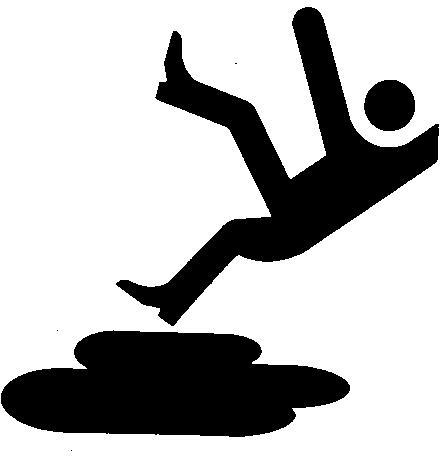
Securely support any machine elements that must be raised for service work.
Keep all parts in good condition and properly installed. Fix damage immediately. Replace worn or broken parts. Remove any buildup of grease, oil, or debris.
On self-propelled equipment, disconnect battery ground cable (-) before making adjustments on electrical systems or welding on machine.
On towed implements, disconnect wiring harnesses from tractor before servicing electrical system components or welding on machine.
Understand Signal Words
Section 10 - GENERAL INFORMATION Group 05A: Safety Section 10 page 21 <- Go to Section TOC TM131019-TECHNICAL MANUAL Practice Safe Maintenance

































